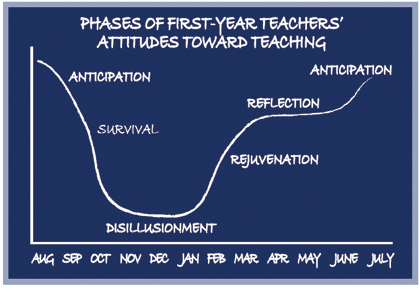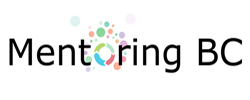(Originally posted on Learner First )
Like just about everyone else in Canada, I have been thinking about the writing of Leonard Cohen since he died last week. I was listening to a call-in show on CBC the other day and the one quote that every other caller kept mentioning was:
“There is a crack in everything
That’s how the light gets in.”
These words stuck with me. I kept coming back to them, knowing there was a connection to my work in mentorship but never quite being able to articulate what the connection was until today when it all made sense. I would like to share that story.
The story starts with a TTOC Mentorship meeting I hosted today. It was not well attended and I almost cancelled it but that is a story for another blog post. I decided against cancelling the meeting because there were a handful of teachers who had RSVP’ed and I felt like we (myself and the planning committee) needed to show up for them. They were looking for a place to connect with others, a chance to share their stories and an opportunity to learn.
One of the activities we engaged in was a storytelling activity. In small groups, we wrote a story of a terrible day for a TTOC. We used our collective experiences to write the stories and then shared the stories and used them to surface the anxieties, fears and stressors TTOCs face in their daily work.

At the end of the activity I took some time to talk about why this was a good use of our time. “Because it is important to normalize these experiences,” I told them. “You might feel like it is just you who is struggling with the unpredictability of this work , who doesn’t understand the callout system, who has had a student lie to you about their name, walk away while you are speaking to them or ignore you completely. You are not the only one who has been caught off guard by a fire drill no one remembered to mention. It has happened to the rest of us here as well. It has happened to me. We are in this together.”
And as we talked about this, I knew that this had been a successful activity. There was a new ease in the room as I assured them that they and their experiences were normal and to be expected. I knew I had made the right choice in not cancelling the meeting, even if all the participants took away was a sense of not being alone.
After the meeting I was speaking with a classroom teacher about her experiences so far this year. This teacher is a good teacher. She is a confident teacher. She has clear ideas and ideals about what kind of learning environment she wants to create in her classroom. But as she talked, bit by bit, she revealed some cracks in her strong exterior. She’s worried about her students’ progress. She thinks, maybe she is not doing enough. She’s tired. She’s feeling like just when she has finally mastered one aspect of teaching, she realizes there is something else that she isn’t doing well enough.
 And as she talked, I could see, hear and feel both most of the teachers I have worked with and myself in all of her stories. I told her that. I showed her the “Phases of a First Year Teacher” graph from the New Teacher Centre and I talked about going through those phases myself.
And as she talked, I could see, hear and feel both most of the teachers I have worked with and myself in all of her stories. I told her that. I showed her the “Phases of a First Year Teacher” graph from the New Teacher Centre and I talked about going through those phases myself.
I tried to normalize her experiences so she would stop being so hard on herself. I told her that these ups and downs are to be expected and that anyone who seems like they have things totally under control 100% of the time is lying either to themselves or to her. “This is the beauty and the struggle of teaching,” I said, “You have to ride the wave of awesomeness when it’s awesome and just keep swimming when it’s not.”
As I shared my own stories, I realized something. I realized I was sharing stories from when I was an early career teacher myself. I wasn’t talking about myself as a learner now and in doing so I was messaging that in my position now, as a teacher-leader, I was somehow finished learning and growing.
So I changed the story I was telling.
I started to share my own doubts about my work and my own struggles. I revealed the cracks in my seemingly solid and smooth teacher-leader shell. “Why aren’t people showing up to the meetings I plan?” I asked, “I could blame them, but there must be something more I can do. I must be missing something” In sharing my current learning and the challenges I’m facing in that learning, I was trying to normalize the learning process, rather than normalize her experience and reduce it to some universal trial we must all endure before we reach some idyllic ending place where we know everything we need to know about learning and teaching.
Mentors and leaders talk a lot about the importance of normalizing the experiences of early career teachers. Teaching can be an isolating career, especially when it seems that everyone else around you is flourishing. So we talk about creating space for teachers to talk to each other about their challenges as well as their success. This is important, but it is not enough.
We need to do more than create space for early career teachers to share their stories and tell our own stories from “when I was a first year teacher . . . ” We have to share our current stories and struggles in our work. We must be vulnerable and model and normalize the process of learning and growth over an entire career.
This requires us to be brave and vulnerable.
Most mentors and leaders are used to being a position of knowing and telling. Most of us started our careers in a system that valued us as the holders of knowledge not as question askers, but that system is changing and if we want to help lead and shape that change we need to be the lead-askers, lead-learners and lead-sharers in our schools.
I challenge all mentors and leaders to share your current learning with an early career teacher, to model that you do not have all the answers and that you are still asking questions and striving to do better. Normalize the feelings and experiences of being a learner for your teaching colleagues by showing them the cracks in your “experienced teacher shell” and let them help you find the light that those cracks let in.
-Tashi Kirincic

